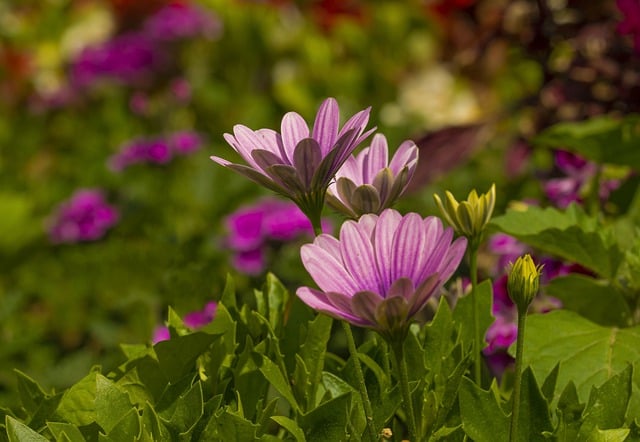California’s diverse climate, marked by prolonged periods of drought, poses a challenge for traditional gardening. However, cultivating a vibrant and sustainable garden in the Golden State is not impossible. By choosing and caring for drought-tolerant plants, you can create a resilient and water-wise landscape that thrives even in arid conditions. In this guide, we’ll explore the steps to successfully grow drought-tolerant plants in California. The Santa Clarita Water agency has a drought tolerant garden and in-depth information on the best plants for you to include in your garden.
Selecting the Right Plants:
Choose native and adapted species: Opt for plants that are naturally adapted to California’s climate, as they are more likely to thrive with minimal water.
Research drought-tolerant varieties: Look for plants known for their resilience in low-water conditions. Succulents, native grasses, and Mediterranean plants are excellent choices.
Soil Preparation:
Improve soil structure: Enhance soil with organic matter like compost to improve water retention and promote aeration.
Mulching: Apply a thick layer of mulch around plants to reduce evaporation, suppress weeds, and insulate the soil.
Watering Techniques:
Deep watering: Water plants deeply and less frequently to encourage deep root growth and reduce surface evaporation.
Drip irrigation: Use drip irrigation systems to target water directly to the plant’s roots, minimizing water wastage.
Water-Saving Practices:
Collect rainwater: Harvest rainwater in barrels to supplement irrigation during dry spells.
Implement a water-efficient irrigation schedule: Adjust watering frequency based on the season and weather conditions to avoid overwatering.
Grouping Plants Strategically:
Group plants with similar water needs together: This allows for more efficient watering practices, as different zones of your garden can be watered according to the needs of the plants within them.
Regular Maintenance:
Pruning and deadheading: Regularly remove dead or spent flowers to encourage new growth and conserve the plant’s energy.
Monitor for pests and diseases: Promptly address any issues to prevent stress on the plants, which can make them more susceptible to drought.
Applying Organic Fertilizers:
Use slow-release fertilizers: Opt for organic, slow-release fertilizers to provide nutrients gradually, promoting healthy growth without excessive water consumption.
Adapting to Microclimates:
Consider microclimates on your property: Different areas of your garden may have varying exposure to sunlight, wind, and moisture. Plant accordingly to make the most of these microclimates. Microclimates are more extreme the farther north you travel.
Education and Community Collaboration:
Attend workshops and community events: Stay informed about drought-tolerant gardening techniques and exchange ideas with fellow gardeners.
Share your knowledge: Encourage others in your community to adopt water-wise practices to create a more sustainable environment.
Growing drought-tolerant plants in California requires thoughtful planning and sustainable practices. By selecting the right plants, improving soil health, adopting water-saving techniques, and maintaining a holistic approach to gardening, you can create a resilient and beautiful landscape that conserves water and thrives in the face of California’s changing climate.



